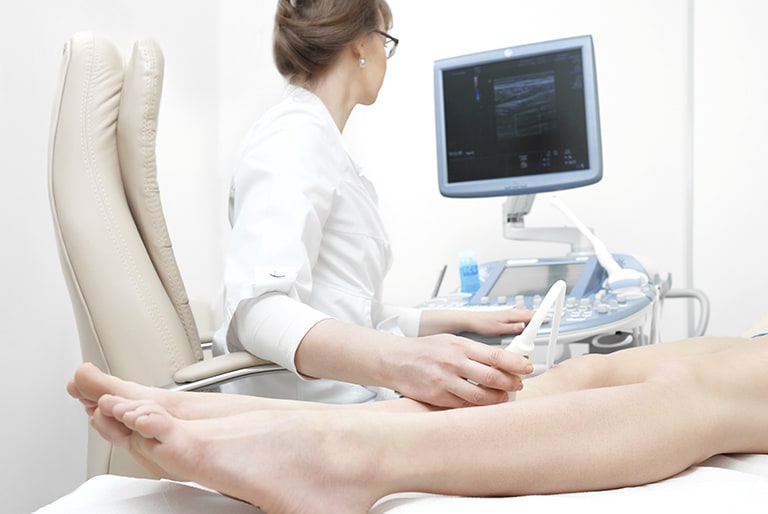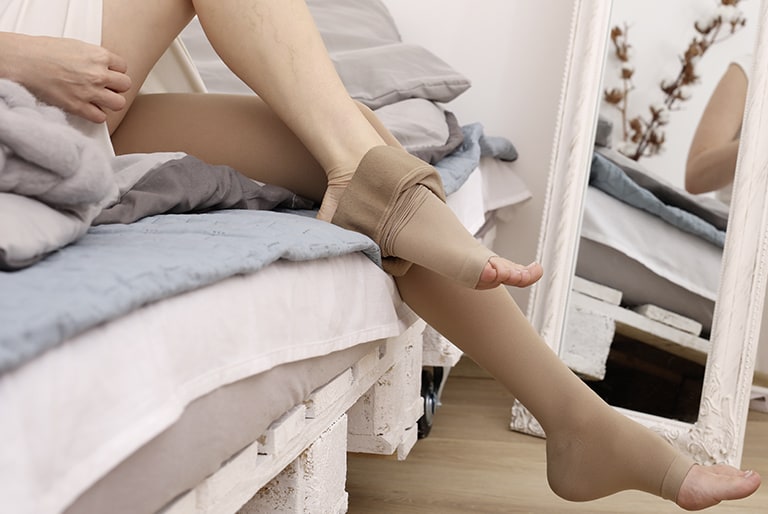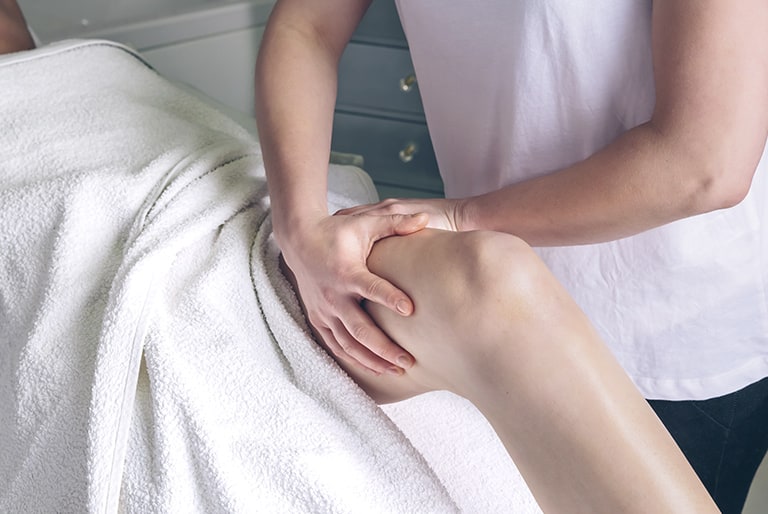CHIVA method
The CHIVA method is only rarely performed in Germany. There are other therapy techniques for treating varicose veins which are much more widespread in this country.

What is the CHIVA method?
There is a check-up examination after six to eight weeks. If the result is still not satisfactory, it may be necessary to still have a supplementary operation, or to have sclerotherapy on the lateral branch veins.
How does the CHIVA method work?
The basic principal of the CHIVA method is to prevent the diseased flow of blood in the superficial leg veins so that the expanded trunk veins can recover. Varicose veins form when veins are overfilled with blood which flows back down and that causes them to severely stretch. With the CHIVA method, the varicose veins are tied off at certain points so that the blood cannot flow back. That corrects the blood flow in the venous system – there is no longer any diseased circulation, but the veins are still available for the transportation of blood via the lateral branch veins. The aim: after a few weeks, the expanded veins go back to their original size.
What is done in the CHIVA method?
Immediately before the operation, an extensive Doppler sonography or a colour duplex sonography is made of the venous system. The vascular surgeon decides at which points the veins should be tied off and draws the point on your skin. If it is an outpatient treatment, the area is anaesthetised with a local anaesthetic. With one to three cuts in the skin the operator carefully gains access to the varicose veins and ties them according to very precise criteria with surgical thread, in order to correct the blood flow. After closing the wound, the patient immediately has a compression stocking applied.
Alternatively, some vascular surgeons use thermal procedures to seal off the veins, such as laser or radiofrequency therapy. This is done through a thin, flexible catheter. Incisions are not necessary for this.
Who is CHIVA method therapy suitable for?
The CHIVA method can be used for venous insufficiency; that means for inverse-flowing blood due to defective venous valves. Small and large, meandering or linear surface veins up to 15 mm diameter can be treated, e.g. the great saphenous vein and the small saphenous vein. The method is not recommended for severely pronounced varicose veins.
What benefits and disadvantages does the CHIVA method have?
The CHIVA method is a vein-preserving form of treatment and is less invasive than stripping the veins. The procedure is even more gentle if the method is done with laser or radio waves, as no cuts are required for them. Therefore, there are no scars and no risk of infection.
Symptoms caused by varicose veins improve more rapidly with the CHIVA method. Swollen legs, calf cramps and a feeling of pressure in your legs regress. However, compared with stripping, the cosmetic effects last much longer, because the veins only recede slowly.
The CHIVA procedure does, however, assume that the treating doctor is very well trained and very experienced, both with ultrasound diagnostics and in the selection and sealing of the veins, so that the desired effect is achieved. The German CHIVA Association (Deutsche Gesellschaft für CHIVA e.V.) trains doctors in this procedure and maintains a list of doctors. However, there are only a few doctors who offer the CHIVA procedure.
In Germany, techniques in which diseased veins are sealed are much more widespread, such as foam sclerotherapy, laser therapy and radiofrequency therapy. By far more frequently performed is vein stripping.
What risks does the CHIVA method have?
As with every operation, there is the risk of thrombosis, but this seldom occurs. More common can be the development of superficial vein inflammation (phlebitis), which quickly disappears after treatment with medication. Nerve damage is also a rarity.
Is the cost of the CHIVA method covered by health insurance funds?
Private health insurers often cover the costs of an operation with the CHIVA method. The statutory health insurers do not, however, bear the cost or, if so, only in individual cases. You should definitely ask before the treatment about the possibility of reimbursement.


